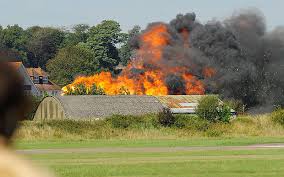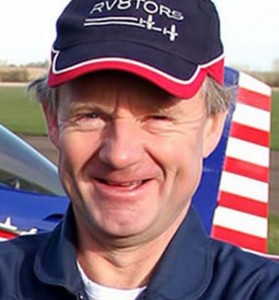The organisers of the Shoreham Airshow where a Hunter Hawker jet crashed, killing 11 men, did not fully consider the risks involved, a new report published today says.

An interim report by the Air Accidents Investigation Branch also reveals that organisers did not know the details of pilot Andy Hill’s routine, and that regulations about flying over residential areas were often infringed.
The crash, which happened on August 22, killed 11 men, most from Brighton and Hove and surrounding areas. They were Maurice Abrahams, Dylan Archer, Tony Brightwell, Matthew Grimstone, Jacob Schilt, Matt Jones, Graham Mallinson, Daniele Polito, Mark Reeves, Richard Smith and Mark Trussler.
Today’s report said: “The risk assessment for the 2015 Shoreham Airshow did not show the range of hazards presented by different display aircraft that formed the display and did not consider specifically where the hazards would occur or who would be exposed to them.
“There was no evidence of an attempt to consider either a hierarchy of protection or control.”
The report, which makes 14 recommendations as a result of the crash, can be read in full here.
It goes on to say that there were no site visits, and those carrying out the risk assessment did not have local knowledge of the display site and its surroundings.

Furthermore, the flying display director was not told of pilot Andy Hill’s planned sequence of display manouevres, which meant he could not assess how risky it was to fly over the crowd and the A27, onto which the jet crashed.
During the airshow, regulations about flying over residential areas were infringed on several occasions.
The report says: “The 2015 Shoreham Airshow organisers knew that the junction of the A27 was a popular location from which to view the display.
“The AAIB was informed that in previous years several hundred people had been observed at this road junction and in the grounds of a nearby, now closed, public house.
“The display organisers had been concerned about the road traffic risk to these crowds and the display organisers had taken steps to minimise the number of people in this area.
“The same arrangements had been in place for several years and had restricted the view of the airfield, placed various signs in the area and used stewards to ask people to move on.
“However, neither the organisers nor the police had requested or been granted the legal power to prevent people from being in this area and their efforts did not prevent a gathering at the A27 junction.
“Discouraging spectators from congregating in certain areas outside the airfield has been unsuccessful and therefore cannot be relied upon as an effective risk mitigation measure.”
It also recommended that future airshows define an “aerobatic box” within which displays must be confined, as the UK does not currently define a specific minimum height for aerobatics.
It said: “If an aerobatic flying display area had been defined at Shoreham, the looping and rolling manoeuvre conducted by [the Hawker Hunter] could have been required to remain with it.
“Alternatively, if during the planning stage it was identified that the aerobatic elements of the proposed display by [the Hawker Hunter] could not be completed within that box there would have been an opportunity to refuse or modify its display.
Andy Hill’s display authorisation licence (DA) was renewed while flying a different type of jet to the Hawker Hunter, which led the report to recommend that DAs should be renewed for each class or type of aircraft the holder intends to operate.
The report also cites an incident at Southport, when Andy Hill was stopped by its FDD when flying a different type of jet, a Provost, “following concerns about the execution of the manoeuvre.”
Reports last month said that the plane had been flying very low over the crowd.
It said the occurence was not formally recorded, investigated or reported to the AAIB.
The report said: “It may not have been apparent to those involved that the duty to report could apply to such occurrences at flying displays or they may have concluded that this occurrence was not reportable.
“Nevertheless, the occurrence could have provided an opportunity to explore the pilot’s continued competence.”
The report said that from 2006 to 2015, there were nine display accidents in the UK in which the aircraft was destroyed and either a fatal or serious injury resulted, equating to an estimated one such accident per 219 display hours.
The review of the risk assessment for the 2015 Shoreham Airshow was commissioned by the AAIB and carried out by the Health and Safety Laboratory.
The review also considered the equivalent risk assessments for the 2013 and 2014 Shoreham Airshows but did not compare these with risk assessments for other flying displays.
The AAIB investigation is independent of the Civil Aviation Authority’s Review of UK Civil Air Displays and an investigation being conducted by Sussex Police.
The purpose of any AAIB investigation is to improve aviation safety by determining the causes of an accident and making safety recommendations intended to prevent recurrence, not to apportion blame or liability. The final report will be published in due course.









